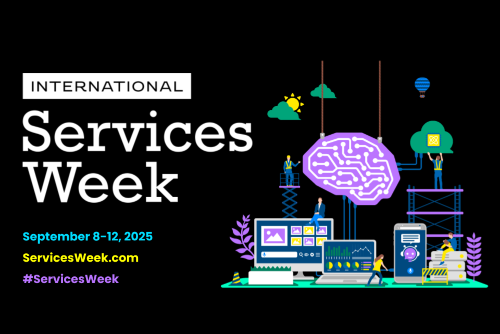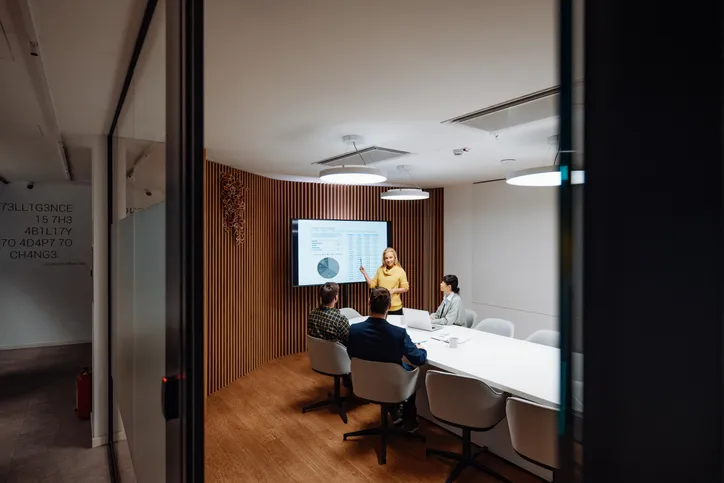Creating customer-centric change in a technology business

Among the world’s key industries, there is little doubt that high-tech is among the fastest-moving and most adaptive. Small wonder, perhaps, since it gave birth to all the digital tools and technologies that now power the world’s companies, governments, and communities.
Ever since Moore shone the first light on the growth rate of processing power, the pace of technology change has only accelerated. Today’s tech businesses continue to push back the boundaries of the possible, and champion digital transformation with fervour. Yet, at an individual level, high-tech companies can find it just as tough as those in other sectors to adapt their business to the changing world.
Of all the pressures facing high-tech business leaders today, it is the urgency of securing and serving customers successfully and profitably that may be the most pressing. Yet, creating the changes that will ensure the next level of success requires thoughtful actions.
Satisfactory UX gives way to incredible CX
In the past, innovation was the lifeblood of a high-tech business. Firms focused on fielding the best products, at speed, to gain first-mover advantage and then stay ahead of the pack. Software as a Service and XaaS changed the game. Tech firms pivoted into services businesses very fast. This certainly brought new opportunities, but plenty of challenges too.
Now, customers need and expect more than ever. The value and experience they seek is not from products, but from providers.
Brilliant service has become the differentiator, and customer satisfaction can now make or break a brand. Securing, retaining, and renewing profitable customers can mean the difference between financial success and failure.
The concept of customer-centricity is far from new, but in high-tech, it is now a critical success factor. Those who fail to make it a priority may face oblivion.
It is the customer who determines what a business is, what it produces, and whether it will prosper. – Peter Drucker, 1954
The need for company-wide connections
Meaningful customer-centricity demands not only a connected business but one which recognises that the customer and their experience lie at the core of every operation.
Great relationships are not built by any one function. Every individual, team, and department will influence and impact customer experience–it is the sum of every impression, conversation, and interaction. Customers make no distinction between interacting with accounts payable, the service desk, or their account manager. This is now a continuous relationship, not a single transaction. Renewal and retention of customers and building long-term value and relationships have displaced simple sales volume measures as determinants of technology business success.
Customers seek a totally connected, seamless, harmonious journey from first sale, through delivery, through problem resolution, billing, and subscriptions. Instead, they often find jarring notes and irritations due to disconnected systems, disparate data, or departments working in isolation. Customer success managers may smooth over some issues, but not all. Customers expect certainty in service delivery, that the promises that you have made in the sales process are kept. To achieve this you need a business platform specifically designed for the needs of a services business.
What should a modern, high-tech platform look like?
Get the guide
No change for customers without internal change for you
Connected customer-centricity done right will do more than simply introduce new systems and processes. It is about business transformation and cultural change. It will shake up ideas about who owns what data, who carries the can for customer service, and who is ultimately accountable for customer satisfaction. It demands a whole company shift of mindset to unlock new collaboration around, and transparency for, the customer.
It requires a true change management approach that is holistic and needs to be driven from the top.
The most important aspect of any change is for there to be real ownership and vision at a leadership level, to aspire to transform how the entire organisation supports, engages, and nurtures its best customer relationships. Aspire is the first of five change leadership steps championed by McKinsey* which includes
- Aspire—Where do we want to go?
- Assess—How ready are we to go there?
- Architect—What must we do to get there?
- Act—How do we manage the journey?
- Advance—How do we continue to improve?
Leading a transition to a true customer-centric organisation has many facets, such as:
- Synchronising the operations of every function, to get everyone on the same page.
- Taking a fresh approach to data that enables finance, sales, and services delivery to share a common version of the truth
- Engaging and empowering not just managers but all employees, partners, and other stakeholders.
- Investing to create transparency and autonomous access to information for customers.
- Being equipped to deliver with intelligence, having strong insights, and making decisions with certainty.
- Ensuring your systems have the agility to accommodate swift changes so that you can ensure certainty for the future.
- Perhaps most fundamental, integrating systems and automating processes to eradicate gaps and disconnects between departments that could erode revenue and deter customers from renewing.
To learn and explore in more depth how you can bring your finance, sales, services, and customer success teams together, and deliver to your customers with business certainty, download our new guide “Building the platform for a modern high-tech business.”
Recent Articles
Maximize your Salesforce investment with Certinia






